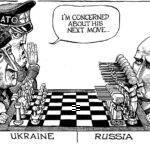WHY IN NEWS?
Recently there was a rising demand from especially the regional parties in North as well as South India to release the Caste Census Data which was collected in 2011 under the Socio Economic and Caste Census (SECC). Also states such as Maharashtra, Odisha and Bihar have demanded to include Caste Census in the upcoming Census collection.
WHAT IS CENSUS?
- An Overview
A population Census is a decadal process(once in ten years) where various information such as family details, economic status, religion, etc are collected, calculated and analyzed for various policy implementation and to understand the population pattern.
- Who conducts the Census?
The Census is conducted by the Registrar General and Census Commissioner under the Ministry of Home Affairs which will split it among two Ministries which are Ministry of Rural Development and Ministry of Urban Housing and Poverty Alleviation. However, the raw caste data was handed over to Ministry of Social Justice and Empowerment by the Ministry of Home Affairs for categorizing and classifying various castes.
Fig: Ministries involved in Census.
- History of Census
When we consider the history of population data collection, we find that it was prescribed way back in 500 AD in Kautilya’sArthashastra and also during the Mughal period in Akbar’s Ain- i Akbari. However, a modern way census was started only by late 1860s.
A Population Census as now happening every 10 years was conducted first in 1872.
SOCIO ECONOMIC CASTE CENSUS
The first Caste Census was conducted by the British in 1931 and it was found that there are over 4,147 castes in India. After that, in the post independent India it was conducted in 2011 where it was found that more than 46 lakhs of caste exist today in India. In 2010 both houses of the Parliament passed a special resolution to conduct the Caste Census of India, namely Socio- Economic Caste Census. The Census was conducted and the raw caste data was handed over to the Ministry of Social Justice and Empowerment for categorization and classification of caste.
While classifying the caste various errors were detected where one particular caste itself was misspelled or mispronounced making it duplicate and thus adding it into a new caste category.For instance, the caste Ezhava if misspelled as Ezhva, Ezava or Ezheva will be made into individual caste categories thus multiplying the number of existing castes in India. The errors implicated in the Caste Census are the reason why the government does not want to release it yet. A further division of the castes into sub castes make it even more cumbersome in a diverse country like India.
The SECC was released in 2015 exempting the Caste census from it.
The Maharashtra Government appealed to the Supreme Court and demanded that the Caste data to be released and also to consider the caste of every citizen to be considered because as of now only the SC/ST is considered as per the President Order under the Constitution (Scheduled Castes) Order 1950 and the Constitution (Scheduled Tribes) Order 1950.
The states of Odisha and Bihar are also demanding that the Caste data be considered from the next census onwards.
ECONOMIC CENSUS
The Economic Census is conducted by the Ministry of Statistics and Program Implementation. It is conducted every 5 years and is crucial in analyzing the economic activities, geographical pattern, agriculture, ownership of land, entrepreneurship and other associated economic activities. It was first conducted in 1992. The 2011 census was the 4th Economic Census and second Caste Census in the country.
Fig: Economic Census timeline.
WHY DO WE NEED A CASTE CENSUS?
Indian society is a caste-ridden society. As per the President Order under the Constitution (Scheduled Castes) Order 1950 and the Constitution (Scheduled Tribes) Order 1950, only the castes of SC and ST are collected while taking the census. While the OBCs also constitute a major part of the population which is more than 52%, the caste information of the OBCs are not collected which is crucial for framing policies.
Thus, two commissions were set up to look into the issues of OBCs.
1) Kaka Kalelkar Commission, 1953
Being one of India’s first Commissions for the Backward Castes, it was set up to identify the backward castes. It made some important recommendations such as,
- Devising caste wise enumeration.
- Considering women as backward.
- Understanding the concept of ‘backwardness in a traditional Hindu hierarchy.
- 70% reservation for qualified students from Backward communities in technical and educational institutions.
- Bringing in extensive land reform programs such as Bhoodan Movement and other framing other economic measures to uplift the OBCs.
- Minimum vacancies for OBCs based on various classes within the OBC.
However, the recommendations were rejected due to lack of objective test for the identification of Backward Class.
2) BP Mandal Commission, 1979
It was set up to identify the socially and educationally backward classes by collecting various necessary data and evidence. The backwardness was calculated based on three criterias such as social, educational and economic factors. It was found that 52% of the Indian population constituted of OBC and thus the commission prescribed reservation of 27% of jobs under various Government and public sector undertaking exclusively for the OBC.
However, the decisions were challenged under Indra Swahney Judgement which said that the recommendations violated the Right to Equal opportunity. It also argued that caste cannot be an indicator of backwardness and cited that the efficiency of public institutions will be at risk upon implementing the recommendations. But the Supreme Court upheld that caste was an acceptable indicator of backwardness and the commission recommendations were finally implemented in 1992.
3) Justice Rohini Committee
This committee was appointed for the sub categorization of the OBC castes but in the absence of a reliable and error proof caste data, it was not possible.
CONSTITUTIONAL IMPLICATIONS
The Indian society is a caste ridden society. The Constitution was framed in such a manner where a positive discrimination or affirmation was show cased in Articles 15 and 16 to promote the welfare of socially and educationally backward classes.
Under the Constitution, SC/ST Reservation is allotted according to the quota ie; Reservation is always directly proportional to the population of SC/ST.
But, as an exception, in some states such as North Eastern states reservation is given up to 80%.
Meanwhile we also have another Supreme Court Judgement which states that Reservation should not cross above 50%. But in an extraordinary instance where the tribal population is exceeding, reservation can be given up to 80%. Reservation of SC/ST in Lok Sabha and State Assembly is in proportion with their population and their reservation to Rajya Sabha is not mentioned. When the same implies for the OBC, no reservation is mentioned at Lok Sabha and in case of State Assembly, it is done in a non- synchronous manner.
The 73rd and 74th Amendment says provides for the reservation of the SC/ST but it does not mention the reservation regarding the OBC.
Article 340 empowers the President to create a committee to look into the socio-economic matters of the OBC. For looking into the affairs of the SC and ST also the President can appoint a Committee under Article 338 and 339 respectively.
In Indra Swahney Judgement, it was clearly mentioned that the reservations are not proportional but for an adequate representation. Based on this adequate representation formula, we have given 27% of reservation for the OBC when we find a 52% of population belongs to OBC according to the 1931 Caste Census data.
USES OF CASTE DATA
- For an affirmative action:
When we have the right data in hand, the right policies and actions can be put into place thus bringing in more productive decisions.
- Reservation Extension:
For extending any reservation, a quantifiable data is to be presented before the Supreme Court.
Example: Nagaraj Case, 1997.
In 1997, an amendment was made to the Constitution to provide promotions in reservations which was struck down by the Mandal Judgement. Later, to bring in such a reservation, an amendment was made again which was challenged by Nagaraj Case.
- Policy Making Benefit.
Having the Caste data will help in understanding if the resources from the government are going to the targeted group or community of people for whom it is meant for.
- Understanding the size of OBC population.
Understanding the size of OBC population will help in making crucial decisions like reservation policy and better implementation of socio –economic welfare programs.
- Understanding income disparity among the population. Oxfam Report 2020 projects that 10% of the population owns 74.3% of wealth while 40% owns 22.9% and 50% of the population owns only 2.8% of wealth.
CONS OF CASTE DATA
- Not feasible and the process is cumbersome.
For example, in the state of Maharashtra alone, when the caste data was collected, it was found that there are over 1 lakh castes. In such a scenario
- Reservation is not an upliftment program, it is a social justice instrument.
Initially the policy of reservation was extended only to the SCs and STs and with time it was extended to the OBCs as well who constitute the major part of the Indian population. Despite having a Supreme Court rule that states reservation should not exceed 50%, how will it be possible to reach the stage of fair share amongst various castes and sub castes who demand their upliftment? Moreover, rather than considering reservation as an instrument of social justice, it is considered as an economic benefit which takes away the true essence of reservation.
- Increases caste consciousness rather than castelessness.
Increasing number of caste organizations and groups create more caste consciousness rather than caste annihilation.
- Source of conflict and uprise.
In most cases it is found that rather than using the caste data to provide benefit to the people, caste is used as tool for politics and is misused in such a manner that it more vertical divisions in the society.
CONCLUSION
When a crucial exercise like Caste Census is conducted, one should make sure that it does not create more caste deviations and problems rather benefit the people for whom it is meant and in being an instrument in framing better policies and better implementation of those policies. Will this Caste Census provide benefit to the targeted group? Are we really going for more equality or inequality through this whole process? The ultimate goal of Caste Census is to create a society that would provide equal educational and employment opportunity. It will also help us to put in the right socio- economic measures and in making it reach the people who actually deserve it and thus strive for a more egalitarian society.
PRACTICE QUESTION
The Policy of Reservations will be meaningful only if it reaches the targeted sections.Critically examine the necessity of sub-categorization of OBCs and SC/STs. (15 marks, 250 words)



Hello! I simply wish to give you a big thumbs up for your excellent information you have right here on this post. I will be returning to your web site for more soon.
I need to to thank you for this good read!! I certainly loved every bit of it. I have you bookmarked to check out new stuff you postÖ